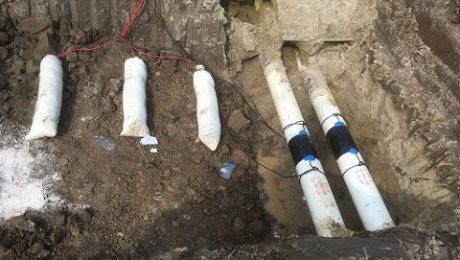Types of backfill in cathodic protection system
Types of backfill
The type of backfill used in the cathodic protection system in ground substrates depends on the type of cathodic protection system used. Due to the fact that the cathodic protection system exists in two types of sacrificial anode systems and impressed current anode systems, so two types of backfill materials are also used.
Sacrificial anode systems
The sacrificial zinc and magnesium anodes used to cathodic protection of structures buried in the soil are sometimes packed in a linen bag with a backing material. These materials reduce the local corrosion of the anode by preventing the anode from coming into direct contact with the soil. It also prevents the anode from becoming passive by reacting with salts in the soil. The backfill used improves the performance of the anode by creating a low-resistance environment around the anode. These materials are generally a combination of three types of gypsum gypsum, bentonite and sodium sulfate, and the percentage of their compounds depends on the environment used.
The following table shows the types of backfills according to the IPS-M-TP 750 standard:

Impressed current system
Impressed current anodes for cathodic protection of underground structures are usually surrounded by a carbon backfill. The purpose of using this support is:
- By reducing the resistance of the environment around the anode, it leads to an increase in the amount of current produced by the anode.
- As the anode level increases, the amount of current increases.
- Reduce anode consumption rate and thus increase anode lifetime.
Carbon backfill according to IPS-M-TP 750 standard is available in three types of 80% metallurgical coke, 90% petroleum coke and 95% special petroleum coke.
The chemical composition of these three types of backfill is specified in the table below:

Coal coke is generally used in shallow horizontal substrates. Petroleum coke or special petroleum is used for deep wells.
- Published in Articles, Educational, Scientific


